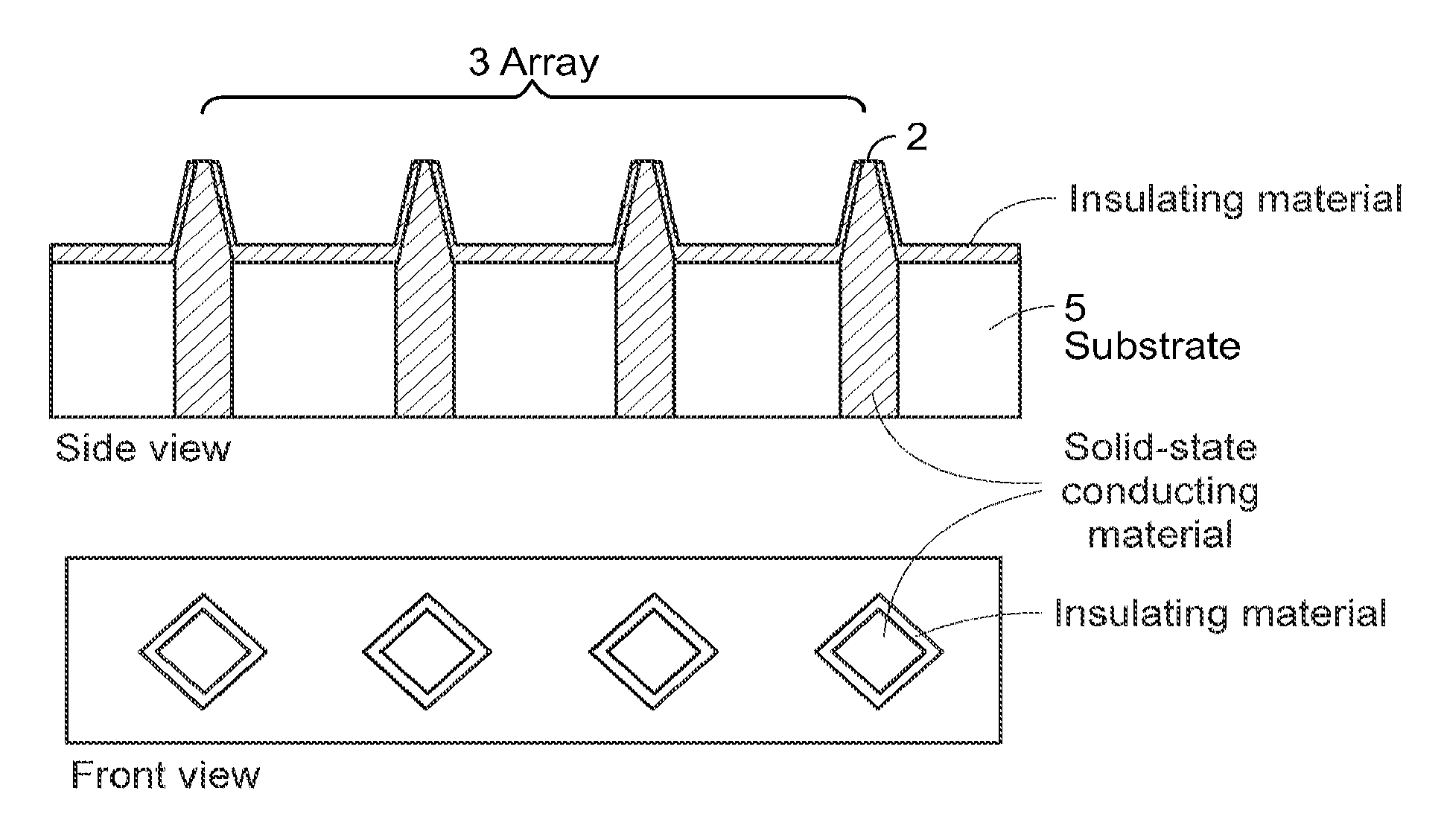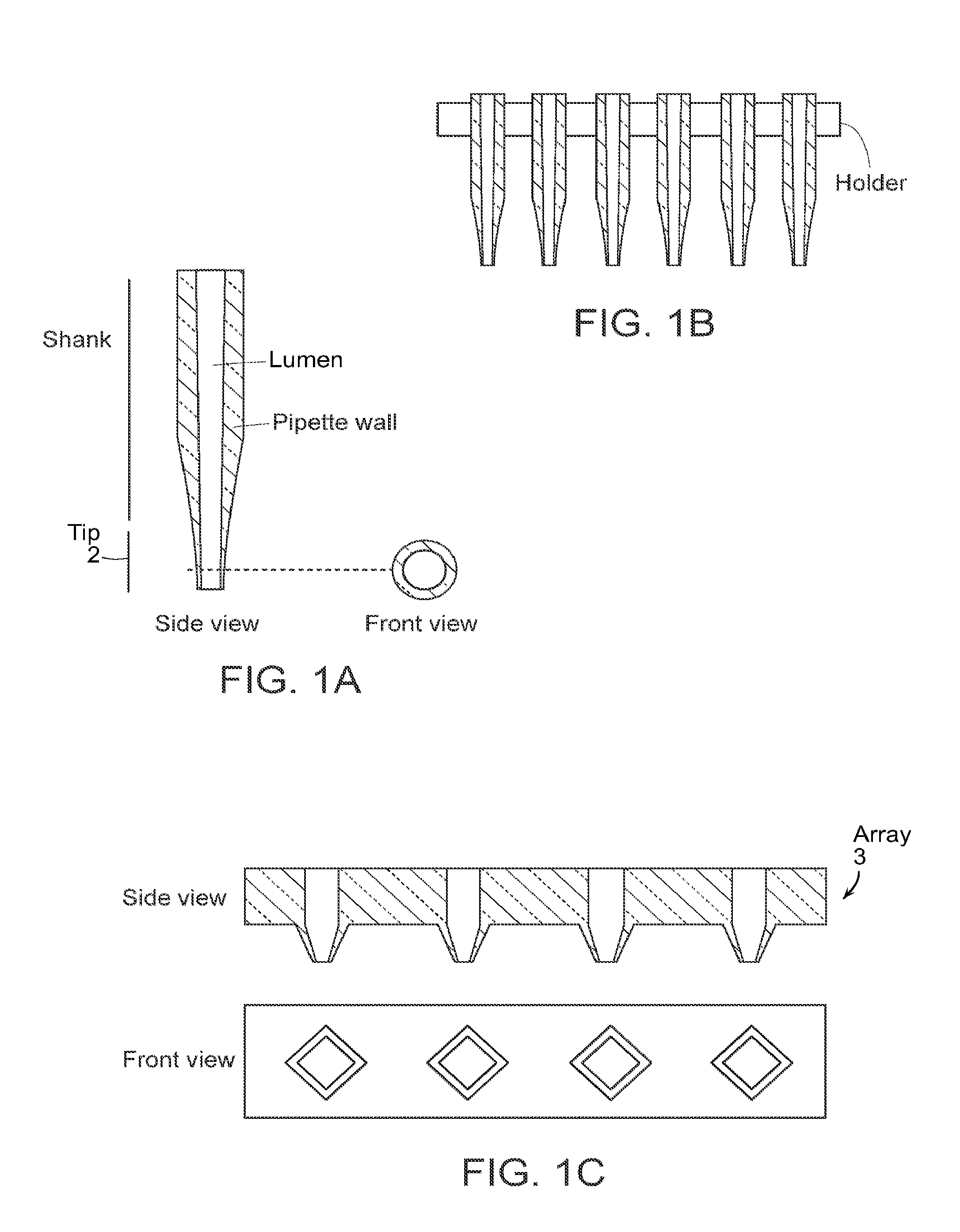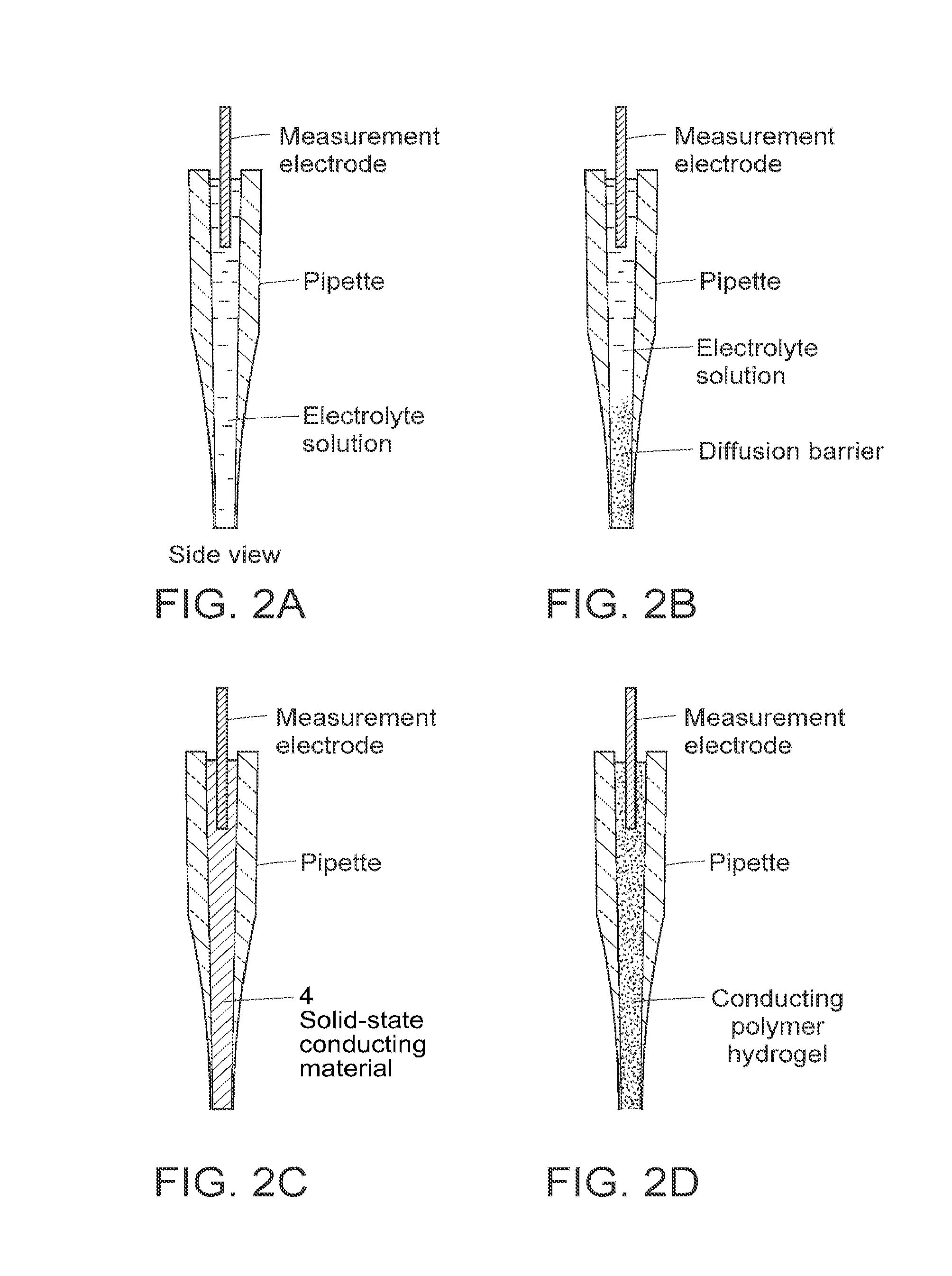Nanoelectrodes and nanotips for recording transmembrane currents in a plurality of cells
a technology of nanotips and electroelectrodes, which is applied in the direction of diaphragms, isotope separation, electrophysiological measurement, etc., can solve the problems of large dead volume, large noise in the system, and large amount of false drug investments, so as to improve the throughput of electrophysiological measurement, reduce noise in measurement, and enhance the ability to measure fast response
- Summary
- Abstract
- Description
- Claims
- Application Information
AI Technical Summary
Benefits of technology
Problems solved by technology
Method used
Image
Examples
example 1
Intracellular Recording of Ion Channel Activity
[0312]Traditionally, intracellular recordings are used in brain slice preparations. In this technique, the tip resistance varies normally between 50-150 MΩ. The electrode is lowered in the bath solution above the submerged slice which is fixed between two nylon nets. The resistance of the electrode is slightly increased when the tip reaches the surface of a cell in the slice. When the electrode penetrates (see below) the cell a negative deflection of the cell's membrane potential is registered. The seal between the electrode and the cell membrane is greatly improved by injection of a hyperpolarizating current into the cell. When a proper seal is formed, the penetrated cell should maintain a physiological relevant membrane potential without injection of the hyperpolarizating current.
[0313]The intracellular voltage-clamp technique works best with large transmembrane currents (>5 nA), leading to a concern that the error due to the uncompen...
example 2
Fabrication of Electrode Devices
[0316]A number of methods exist to microfabricate protruded cell contact surfaces having suitable geometries for carrying out electrophysiological measurements. Here, one particular procedure is described, by which a circular opening at the tip of a pyramidal structure in a cell chamber is microfabricated.
[0317]Masks for photolithography were produced using standard e-beam writing on a JEOL JBX-5DII electron beam lithography system (medium reflective 4″ chrome masks and Shipley UV5 resists, 50 keV acc. voltage, dose 15 μC / cm−2, exposure current 5 nA). The resist was spin coated at 2000 rpm for 60 s giving 250 nm of resist and soft baked for 10 minutes at 130° C. on a hotplate before exposure. The pattern was post exposure baked for 20 minutes in an oven at 130° C. and developed for 60 s in Shipley MF24-A, rinsed in DI water and ashed in a reactive ion etcher (Plasmatherm RIE m-95, 30 s, 50 W, 250 mTorr, 10 ccm O2). The chrome was etched for 1-2 minute...
PUM
| Property | Measurement | Unit |
|---|---|---|
| diameter | aaaaa | aaaaa |
| diameter | aaaaa | aaaaa |
| outer diameter | aaaaa | aaaaa |
Abstract
Description
Claims
Application Information
 Login to View More
Login to View More - R&D
- Intellectual Property
- Life Sciences
- Materials
- Tech Scout
- Unparalleled Data Quality
- Higher Quality Content
- 60% Fewer Hallucinations
Browse by: Latest US Patents, China's latest patents, Technical Efficacy Thesaurus, Application Domain, Technology Topic, Popular Technical Reports.
© 2025 PatSnap. All rights reserved.Legal|Privacy policy|Modern Slavery Act Transparency Statement|Sitemap|About US| Contact US: help@patsnap.com



